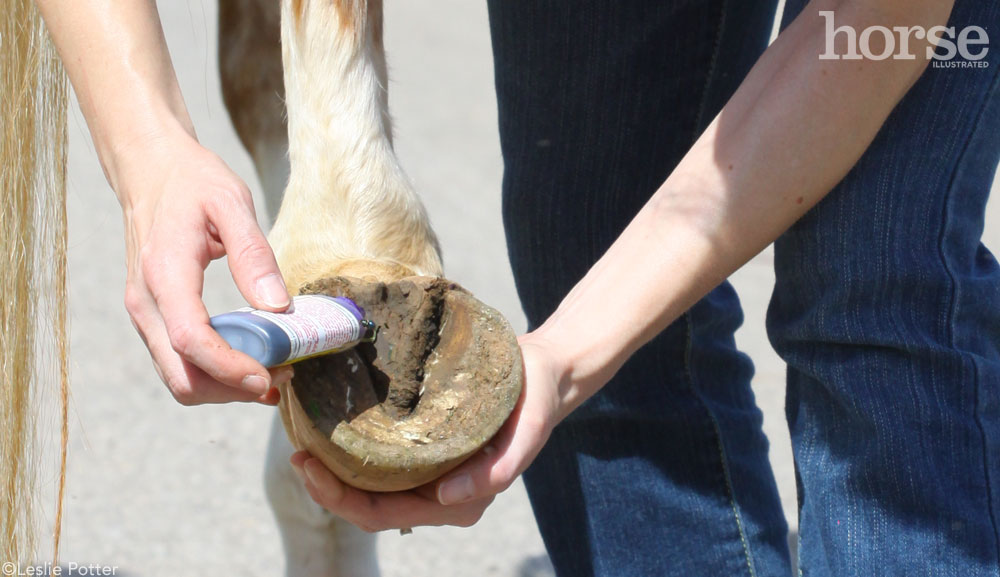Symptoms: Foul-smelling, gooey black discharge in the frog, especially in the grooves in its center and sides; lameness only in severe cases.
What to do: Thrush isn’t an emergency. Most of the time, an experienced owner can treat it successfully, but an extensive case may require removal of the diseased tissue, which should only be done by a vet or farrier. Consult your vet if you’re not sure of the diagnosis or you don’t think you can treat it yourself. To treat thrush, clean out the foot and scrub it thoroughly with a stiff brush and warm water or Betadine. Dry the foot completely, then soak a cotton ball or small gauze pad in disinfectant (undiluted household bleach, Betadine or Kopertox) and use a hoof pick to press it into the affected grooves. Repeat this treatment daily for seven days, then stop for seven days. Continue in this manner until the grooves have closed and the thrush is gone. Commercial thrush treatments are also available; follow the label directions. If the thrush doesn’t respond to treatment, consult your vet. Prevent future outbreaks by cleaning your horse’s feet daily and making sure that his bedding is dry and clean.
Outlook: If treated appropriately, thrush doesn’t usually recur unless the horse is subjected to excessively wet conditions.
Back to Horse Health Glossary
This article originally appeared in the 2012 issue of Horses USA. Click here to purchase the most recent issue.








i picked my friends horses feet yesterday and found thrush. the problem is one of them started bleeding. how serious is this. what do i need to tell her to do. is he gonna be lame today or worse?